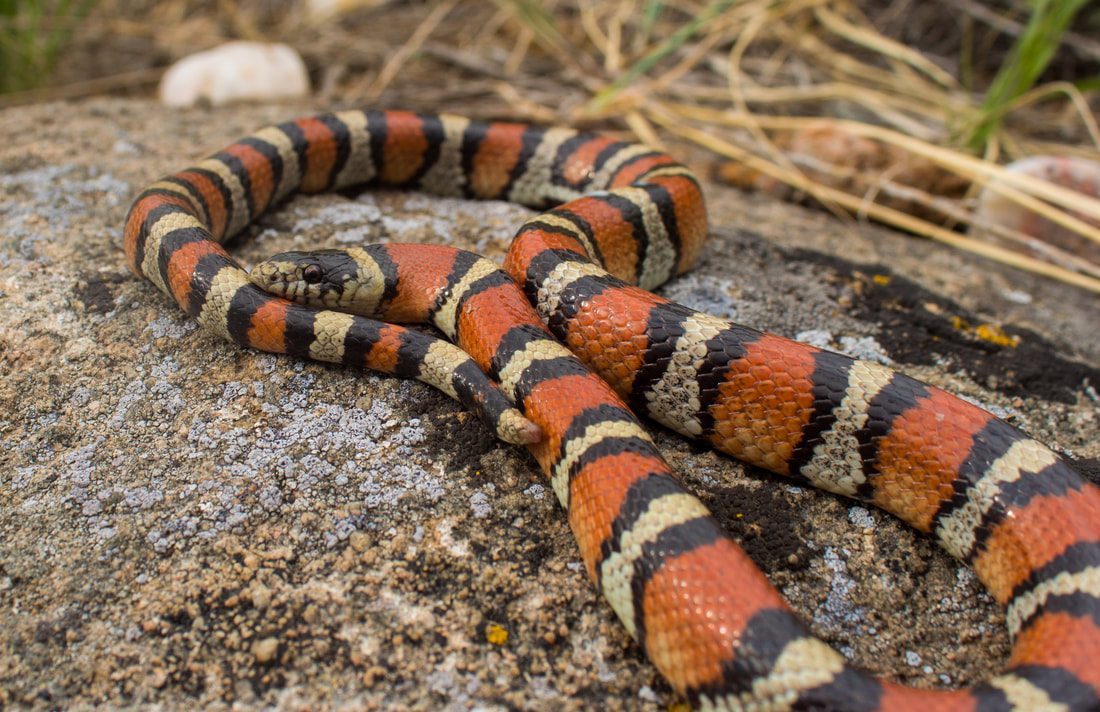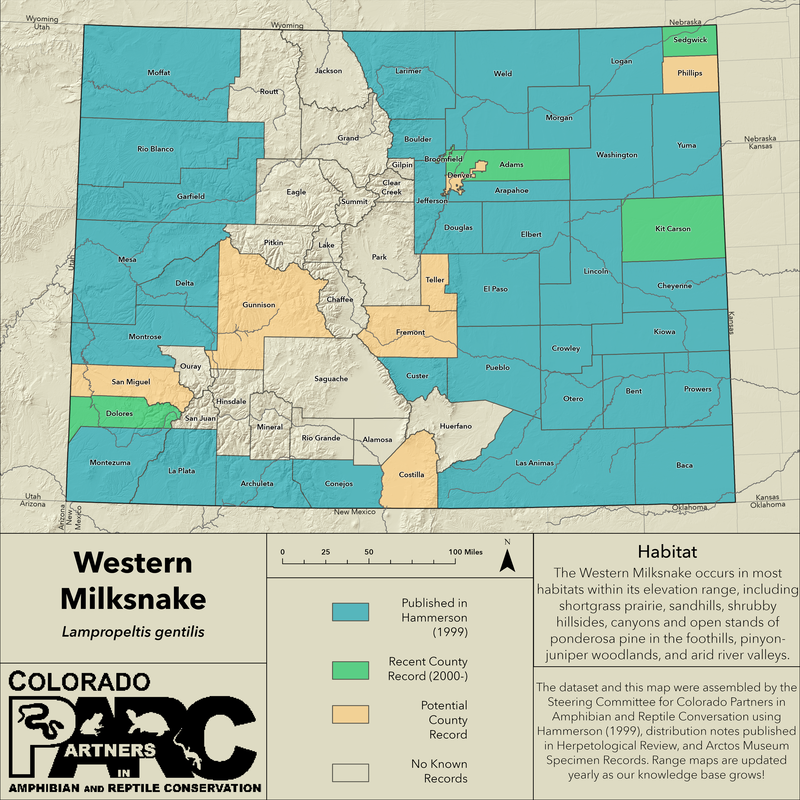|
Identification:
Distribution: In Colorado, this snake exists in much of the eastern plains and west slope regions at elevations primarily below 8,000 feet (2,440 m). (Hammerson 1999)
Activity: Emergence from hibernation takes place sometime between April and early June, depending on locality and will continue into October. The Western Milksnake is primarily nocturnal, though there are rare cases of observed activity during the day. This snake seems to prefer moist surface conditions that occur after rainfall. (Hammerson 1999)
Conservation Status: Designated as a non-game species in Colorado. In the past years, populations of this snake have declined along the front range and in other areas of high disturbance. However, most habitat for this snake remains suitable and is not significantly threatened (Hammerson, 1999). It is important to note that this is a commonly sought-after species in the pet trade and there has been a reduction in some populations due to collection.
NatureServe rank: G5 (Globally Secure), S5 (State Secure). |
Habitat: The Western Milksnake occurs in most habitats within its elevation range. These include “... shortgrass prairie, sandhills, shrubby hillsides, canyons and open stands of ponderosa pine in the foothills, pinyon-juniper woodlands, and arid river valleys'' (Hammerson, 1999).
Diet: Western Milksnakes constrict their prey before consuming it. They are opportunistic feeders and have been observed to prey on “... small vertebrates, including mammals, birds, lizards, and snakes. It also consumes bird and reptile eggs” (Hammerson, 1999).
Defense: When disturbed, western milksnakes may strike, vibrate their tail, and excrete feces and cloacal sac secretions. However, they are known to be docile if handled gently. (Hammerson 1999)
Natural Predators: Predators of this snake may include mammals, larger snakes, birds of prey, and other carnivorous species they exist with.
|
Cited & Additional Resources
Hammerson G. A. 1999. Amphibians and Reptiles in Colorado. University Press Colorado, Boulder.
Hammerson G. A. 1999. Amphibians and Reptiles in Colorado. University Press Colorado, Boulder.
Account compiled by: Hayden Lewis
Reviewed by:
Last Updated: 1/30/2023 by Anthony Berardi
Reviewed by:
Last Updated: 1/30/2023 by Anthony Berardi



